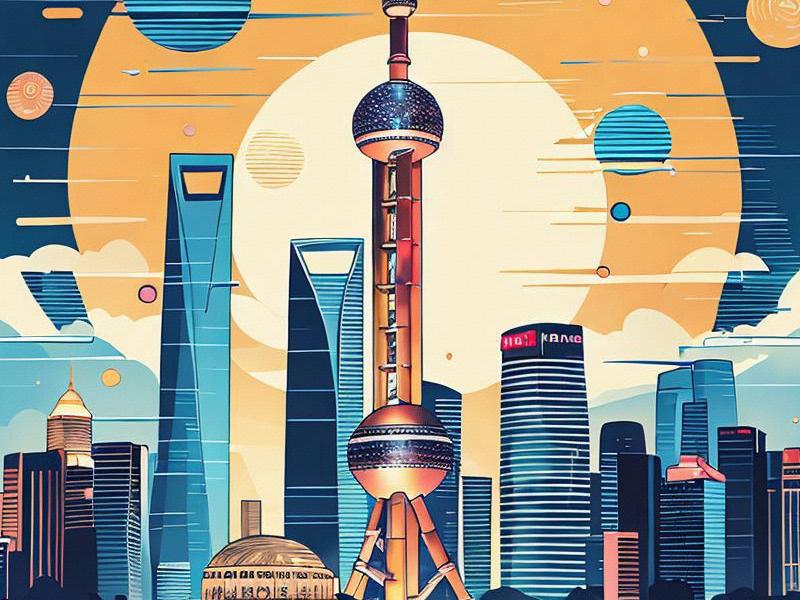Shanghai, a vibrant metropolis located on the eastern coast of China, stands as a testament to the country's rapid economic growth and urban transformation. As the largest city in China and one of the world's most influential financial centers, Shanghai is a city that seamlessly blends tradition with modernity, offering a unique glimpse into the future while honoring its rich cultural heritage.

Shanghai's journey from a modest fishing village to a global powerhouse is nothing short of remarkable. In the early 19th century, Shanghai was a small settlement with a population of just a few thousand. However, its strategic location along the Yangtze River and its deep-water harbor made it an ideal gateway for international trade. This led to the establishment of foreign concessions, which brought in a wave of Western influence and modernization.
The opening of the Treaty Ports in 1842 following the First Opium War marked a turning point for Shanghai. The city quickly became a bustling center of commerce and culture, attracting merchants, missionaries, and adventurers from around the world. By the early 20th century, Shanghai had earned the nickname "Paris of the East," renowned for its cosmopolitan lifestyle, vibrant nightlife, and stunning architecture.
The Communist Revolution in 1949 brought significant changes to Shanghai. The city's role as a global financial hub diminished, and it became a major industrial base for the newly established People's Republic of China. Despite these shifts, Shanghai retained its entrepreneurial spirit and resilience, laying the foundation for its resurgence in the late 20th century.
In the 1990s, the Chinese government launched the Pudong New Area project, a bold initiative to transform Shanghai into a world-class city. This ambitious plan involved the development of a modern financial district, the construction of iconic skyscrapers, and the expansion of infrastructure. Today, Pudong is home to some of the tallest buildings in the world, including the iconic Oriental Pearl Tower, the Jin Mao Tower, and the Shanghai Tower.
上海龙凤419社区 Shanghai's economic success is driven by its status as a global financial hub. The city hosts the Shanghai Stock Exchange, one of the largest stock exchanges in the world, and is a key player in international trade and investment. Its well-connected transportation network, including the world's busiest container port and two major international airports, further solidifies its position as a vital node in the global economy.
Beyond its economic prowess, Shanghai is a city of cultural contrasts. The Bund, a historic waterfront promenade, offers a stunning view of the futuristic skyline of Pudong across the Huangpu River. Here, visitors can admire the preserved colonial architecture that stands as a reminder of the city's rich history. In contrast, areas like the French Concession showcase a blend of European and Chinese influences, with charming streets lined with cafes, boutiques, and art galleries.
Shanghai's cultural scene is as diverse as its population. The city is home to numerous museums, theaters, and music venues, attracting artists, musicians, and performers from around the world. The Shanghai International Film Festival, one of Asia's most prestigious film festivals, highlights the city's commitment to promoting the arts and fostering cultural exchange.
Education is another area where Shanghai excels. The city boasts some of the best universities in China, including Fudan University and Tongji University, which attract students and researchers from around the globe. Shanghai's emphasis on education and innovation has contributed to its reputation as a hub for technological advancements and research.
上海夜生活论坛
However, rapid urbanization has brought challenges to Shanghai. The city faces issues such as traffic congestion, air pollution, and housing shortages. To address these concerns, the government has implemented various measures, including the expansion of public transportation, the promotion of green initiatives, and the development of affordable housing projects.
Shanghai's commitment to sustainability is evident in its efforts to reduce carbon emissions and promote renewable energy. The city has set ambitious targets to become a low-carbon metropolis by 2040, with plans to increase the use of electric vehicles, improve energy efficiency, and expand green spaces. Initiatives such as the Shanghai Green Roof Program and the construction of the world's first commercial-grade offshore wind farm demonstrate the city's dedication to environmental stewardship.
Tourism is a significant contributor to Shanghai's economy, attracting millions of visitors each year. Iconic attractions like the Yu Garden, the Nanjing Road shopping street, and the Shanghai Museum draw tourists from all over the world. The city's ability to cater to diverse interests, from history and culture to fashion and cuisine, makes it a favorite destination for travelers.
上海龙凤419 Shanghai's culinary scene is a reflection of its multicultural heritage. The city is known for its vibrant night markets, where visitors can savor a variety of street food, from steamed buns and dumplings to skewered meats and sweet desserts. Fine dining options abound, offering everything from traditional Shanghainese cuisine to international flavors.
As Shanghai continues to grow and evolve, it remains a symbol of China's rise as a global superpower. The city's ability to balance rapid development with cultural preservation and environmental sustainability serves as a model for other urban centers around the world.
In conclusion, Shanghai is a city that embodies the spirit of modern China. Its rich history, dynamic economy, diverse culture, and commitment to sustainability make it a unique and fascinating destination. As Shanghai looks to the future, it is poised to remain a global leader, shaping the course of urbanization and globalization in the 21st century.